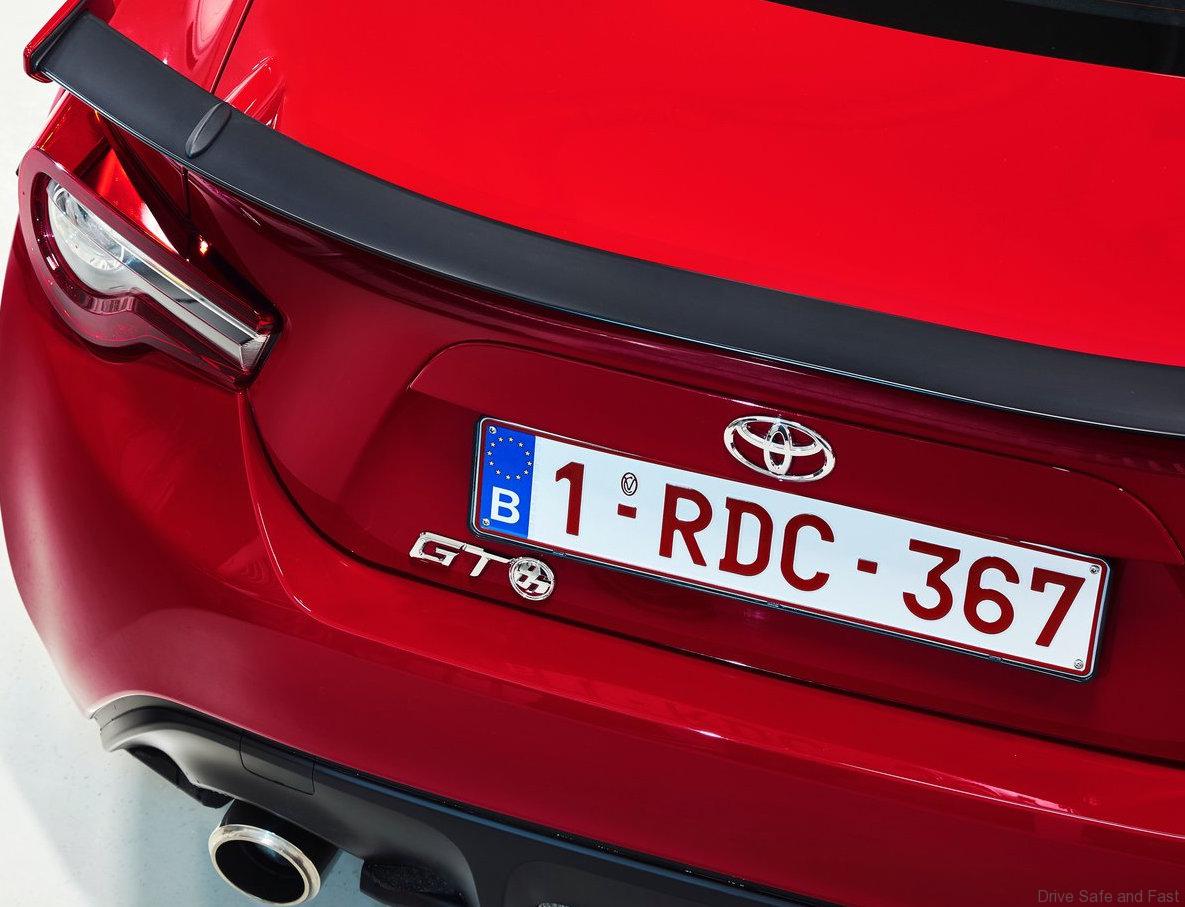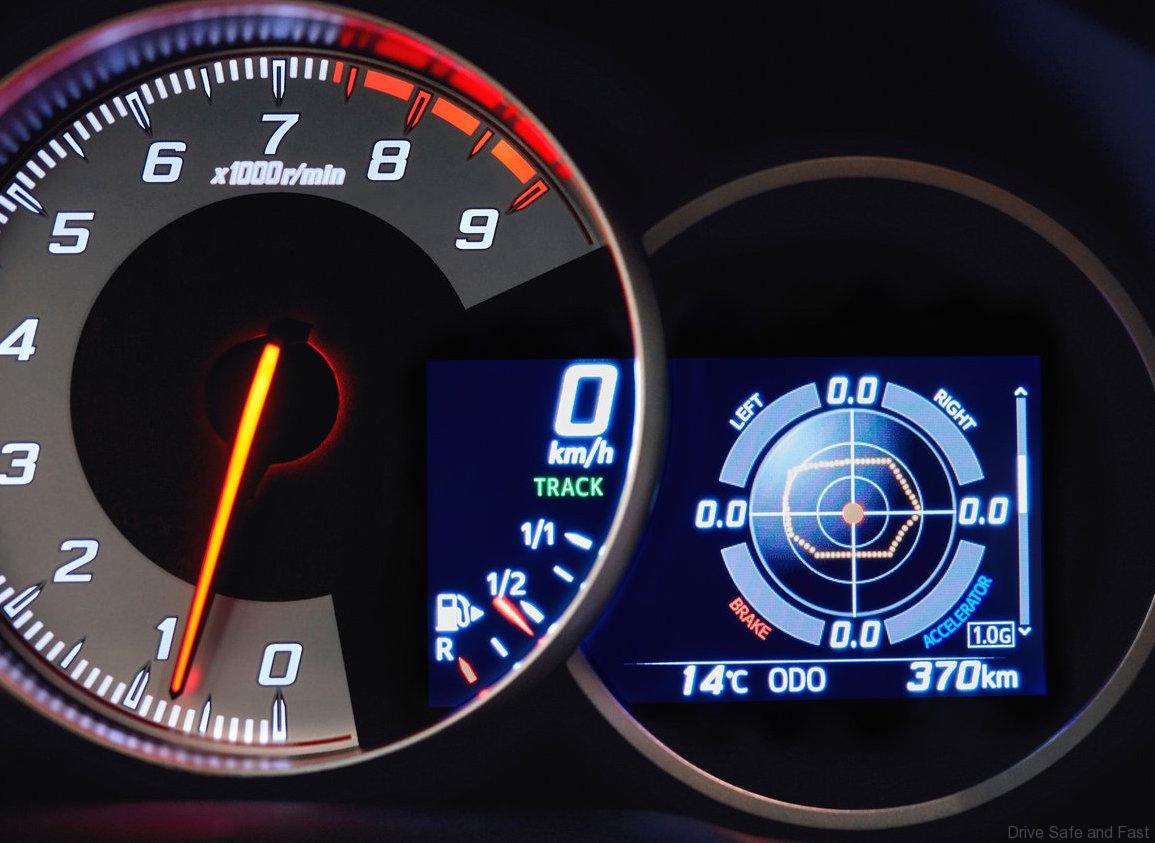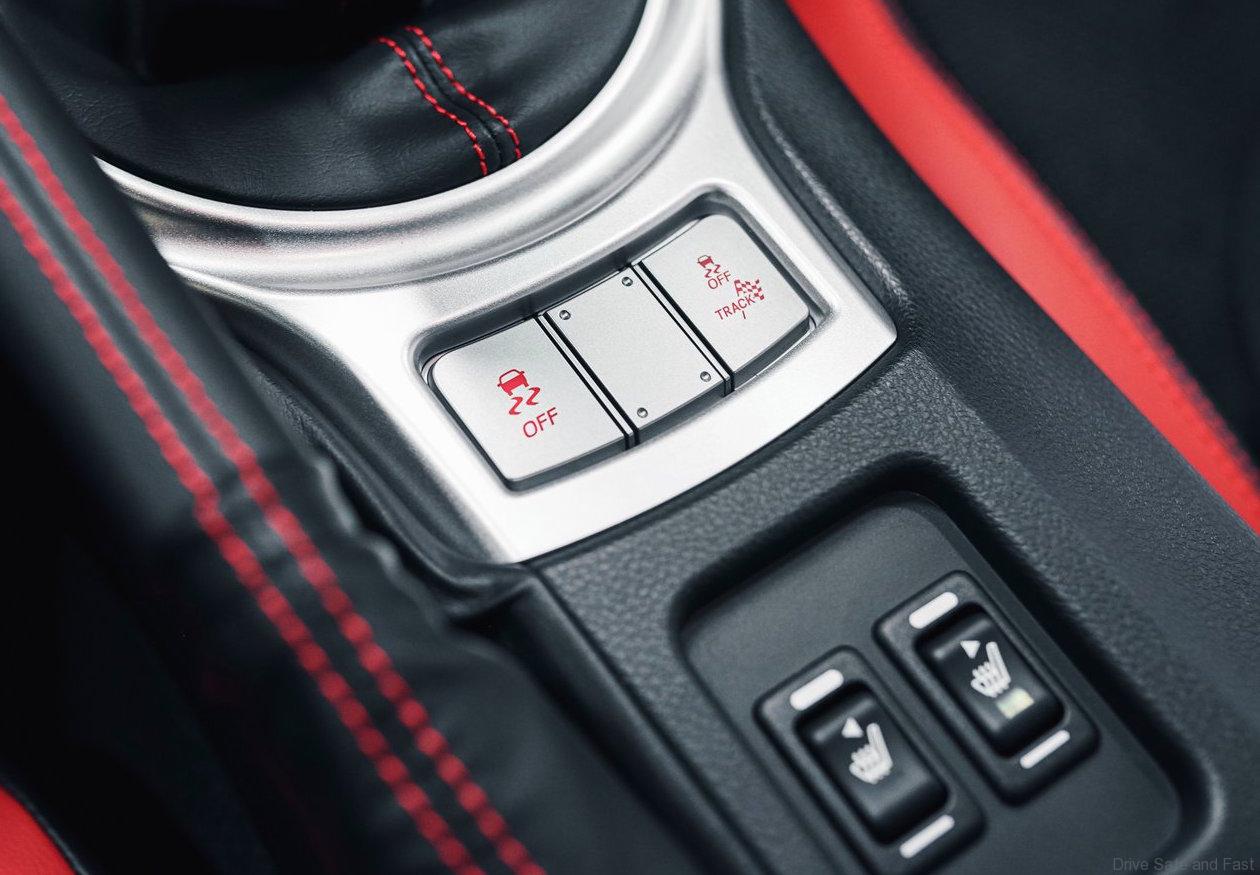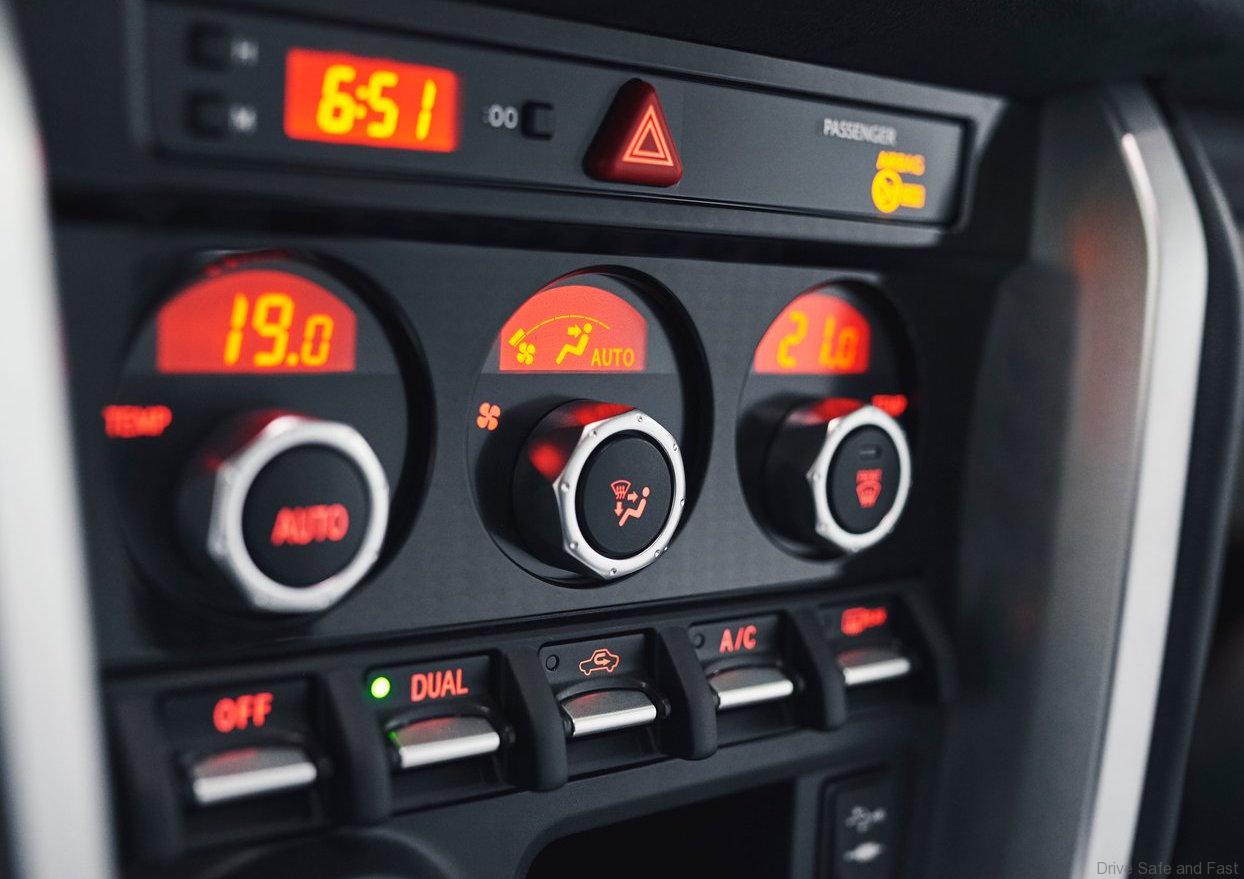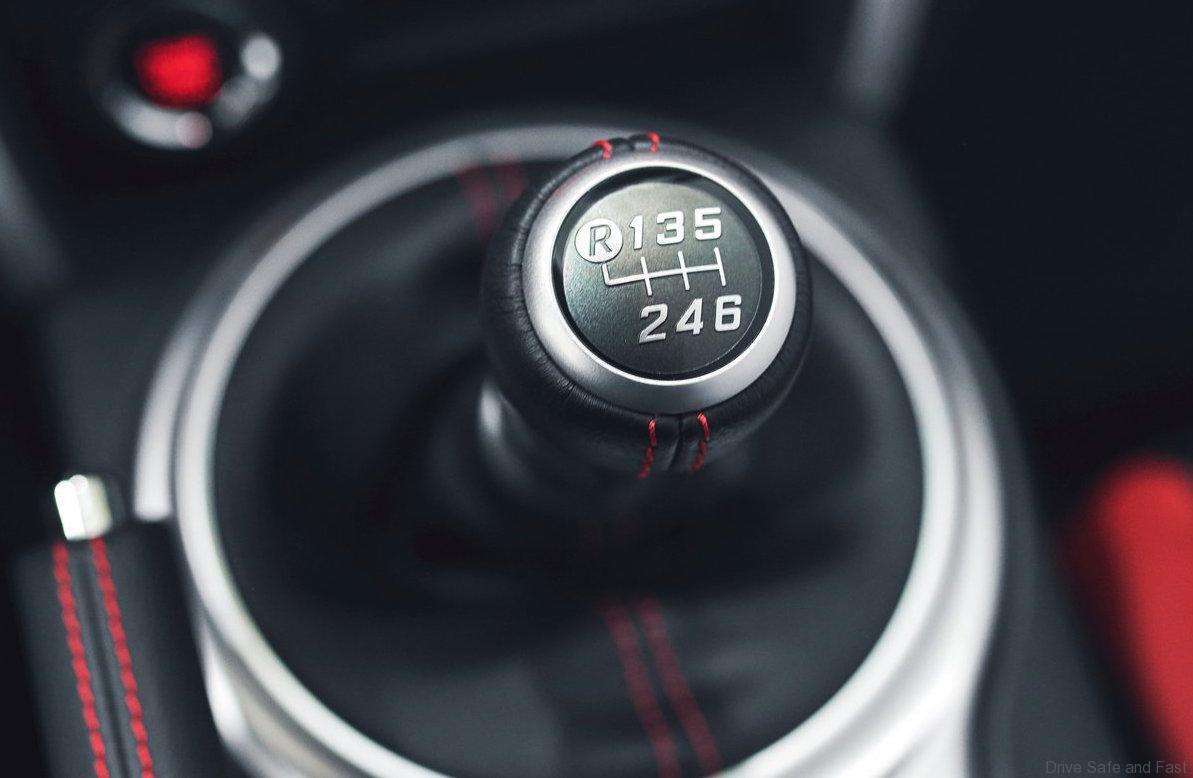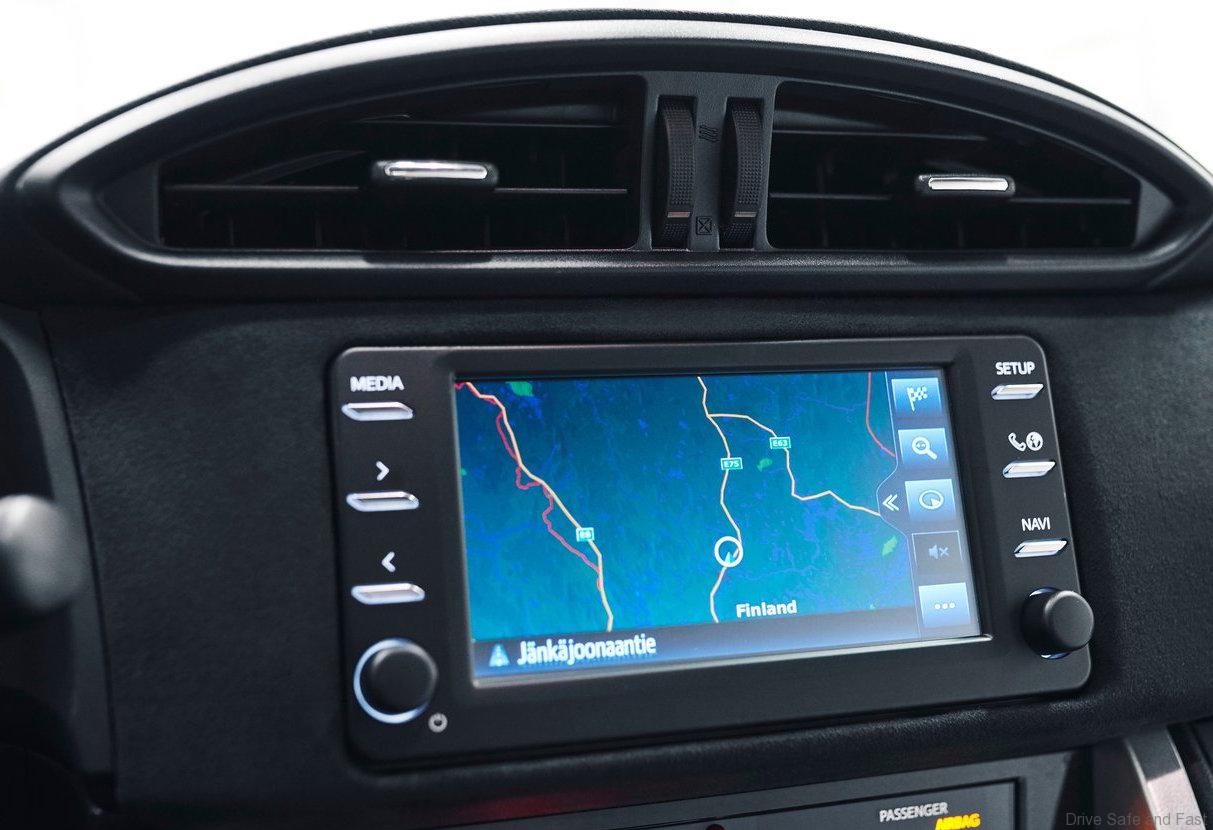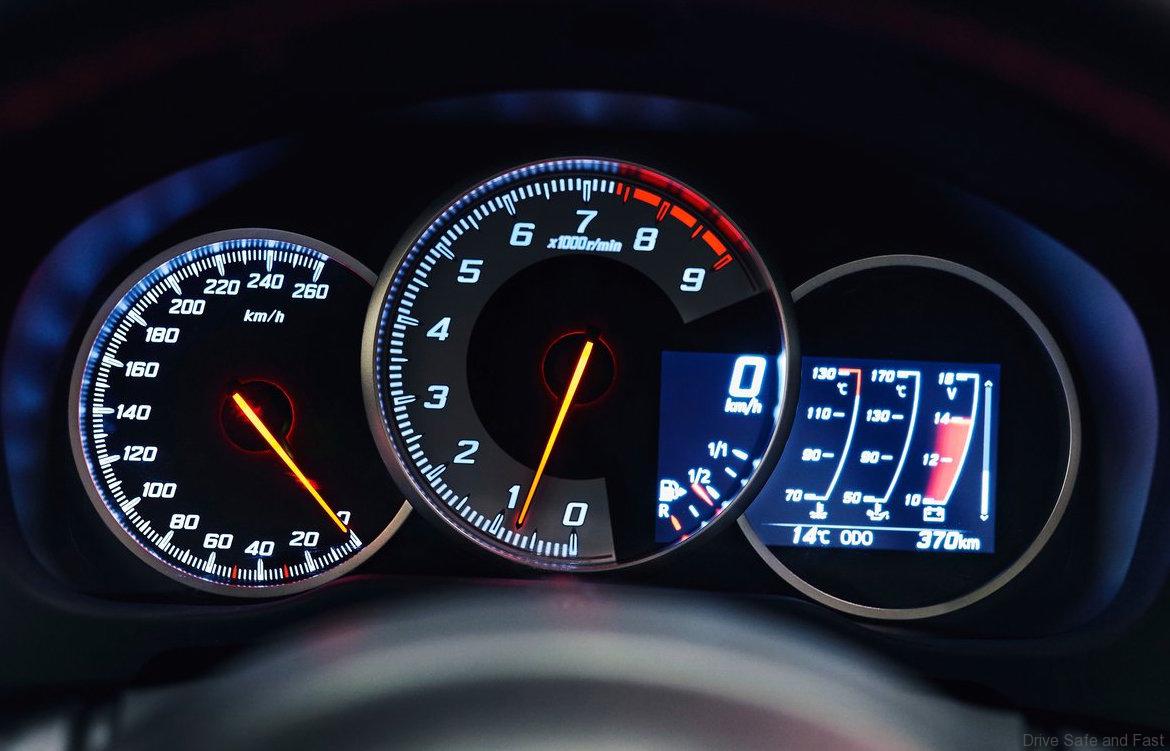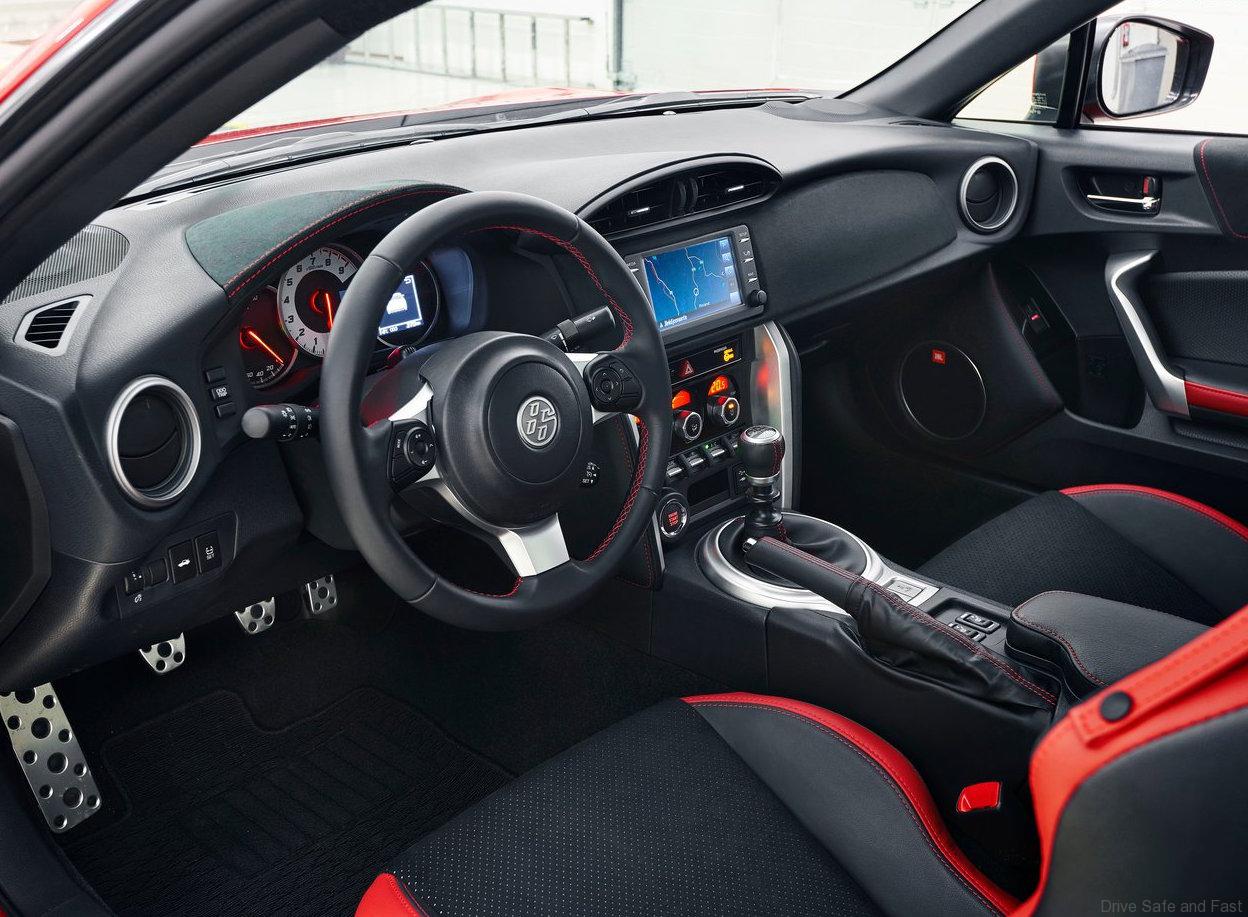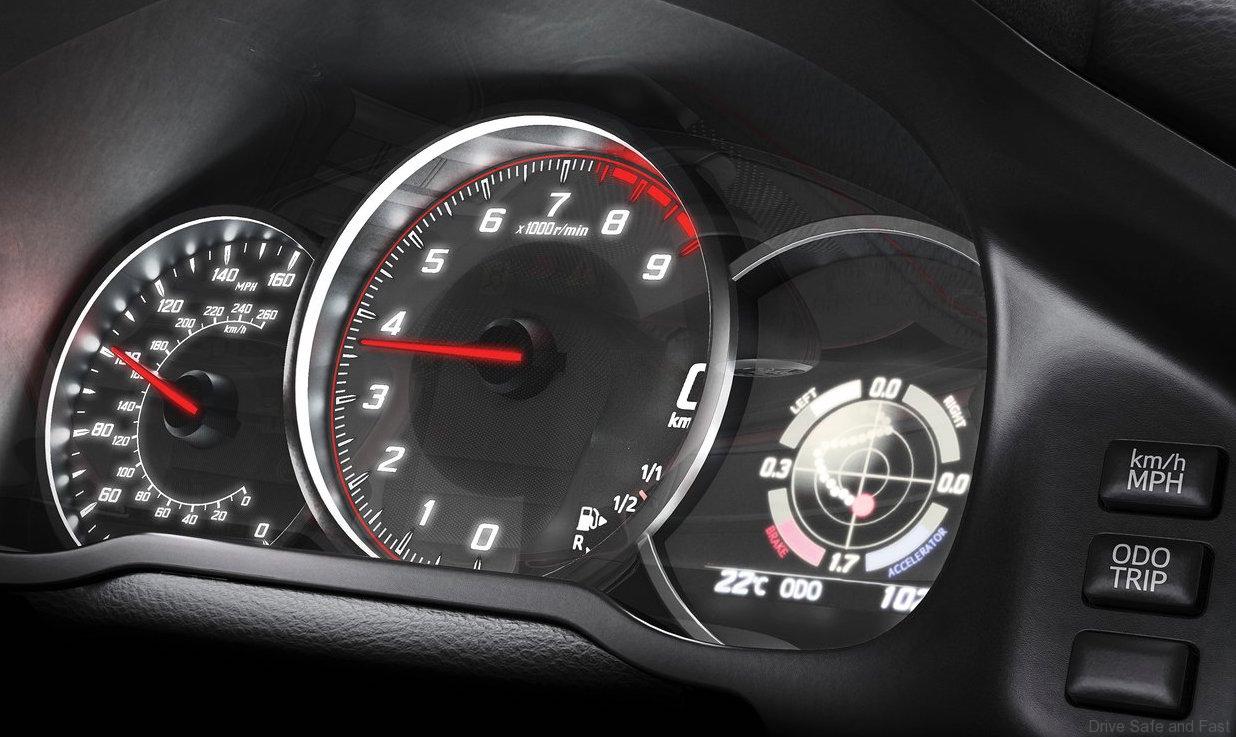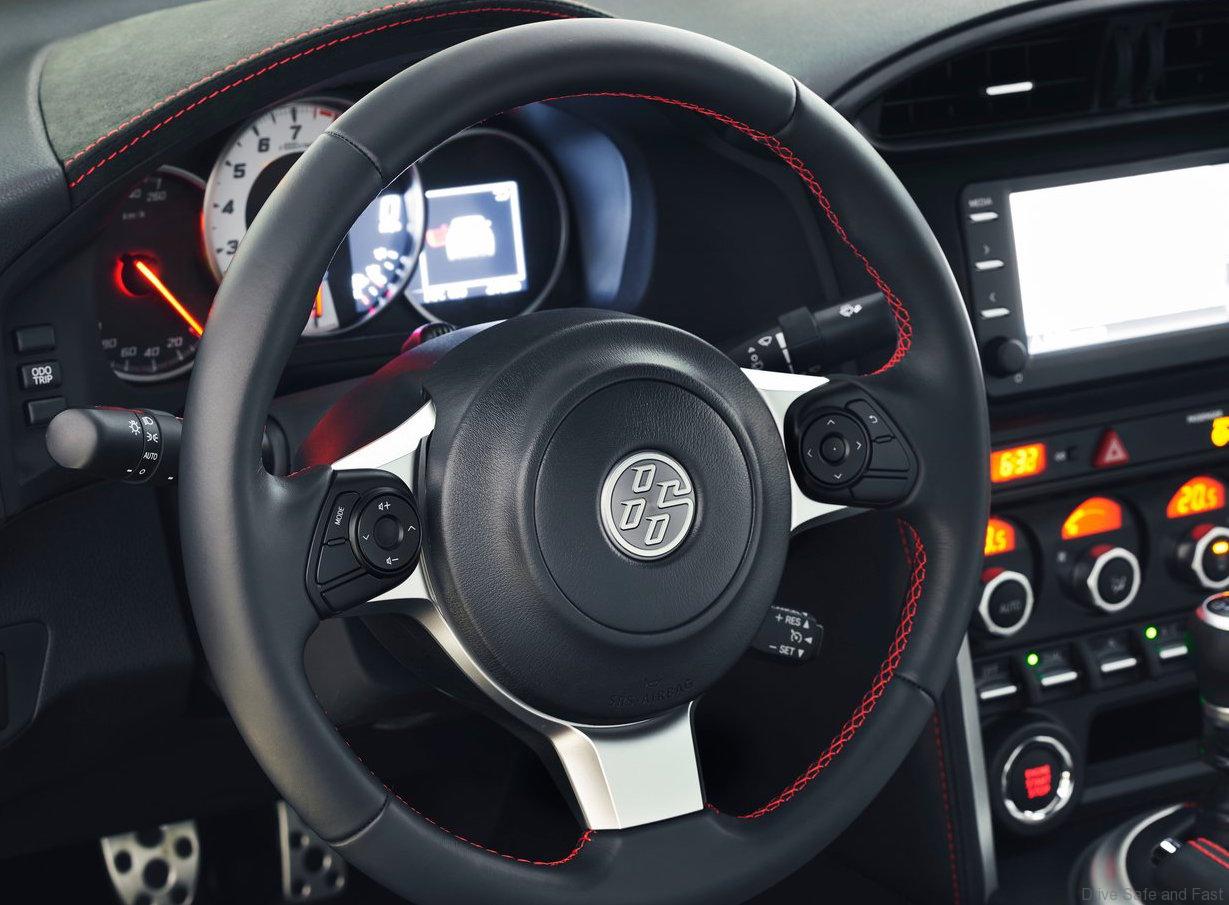Toyota has revised the popular GT86 for 2017 with more improvements where it matters. Sadly, however there is still no turbocharger and no all wheel drive option.
Under the skin there have been detailed adjustments to the suspension and damping, targeting improvements in handling, stability and ride comfort, and measures have been introduced to increase body rigidity.
One of the most significant developments in the 2017 GT86 from a driver’s point of view is a new Track mode, giving them the opportunity to enjoy performance driving with minimum intervention of electronic Vehicle Stability Control and traction control systems. The car’s new multi-information display gives them real-time access to power and torque curves, G-forces and a stopwatch to chart successive lap times.
The addition of the Track mode is one element in an extensive reappraisal of the GT86’s electronic control and handling systems, including the performance of the ABS and traction control. Chief Engineer Tetsuya Tada considers that these revisions in fact deliver the most significant changes in the car’s handling potential, making good use of information gained from the coupe’s participation in motorsport.
In design terms, the new car is not a radical departure from the original, but rather matures its established styling, reinforcing the car’s low and wide sporting stance. The changes include new LED headlight units with integrated LED daytime running lights and turn indicators, a lower nose and a revised front bumper. At the rear there is a new full-width, wing-type spoiler. Every change – even the smallest detail – has contributed to better aerodynamic performance, under the instruction of Tetsuya Tada, the GT86’s inspirational Chief Engineer.
Customer feedback has also informed the revisions to the coupe, in particular in the cabin where new trim and upholstery materials take the sensory quality to a higher level and a new small-diameter steering wheel generates an even stronger connection between driver and car.
Together these changes combine in a car that stands as an even a stronger expression of the guiding principles that define the GT86 as an authentic, high-quality driver’s car.
“If it’s not fun to drive, it’s not a car” President Akio Toyoda
IMPROVED DRIVING DYNAMICS
The MacPherson strut front suspension benefits from pinpoint adjustments to deliver improved handling, stability and ride comfort and better steering feel.
Focusing on the performance of the coil springs, the spring rates have been optimised and the axis load control system has been engineered to reduce the difference in steering force on the left and right hand sides. The springs are also able to flex as well as compress, helping produce a smooth and easy-to-control steering feel.
The Showa shock absorbers have been revised, too, with the sliding surface of the guide bushing changed to provide better friction characteristics, contributing to the car’s improved handling and stability. Damping force has been reduced to gain an improvement in ride comfort.
Optional SACHS shock absorbers provide a further upgrade to response and stability, reducing roll for a flat and smooth ride.
Rear suspension
Changes in the rear double wishbone suspension target turning performance as well as gains in handling and stability, achieved through optimised coil spring rates and the same changes to the shocks as featured in the front suspension.
An increase in the diameter of the rear anti-roll bar contributes to better turning performance, together with a change in the distribution of longitudinal body roll.
Enhanced body rigidity
The rigidity of the Toyota GT86’s body is key to its rewarding handling and driveability, an area addressed by careful use of different high-tensile steels to achieve strength, torsional stiffness and light weight within the body shell. The hood is made from sheet aluminium and the wings from thinner sheet steel, helping minimise the coupe’s weight.
Small but telling measures have been taken to improve body rigidity and vehicle durability further in the 2017 GT86, including a thicker mounting bracket for the front suspension towers, a thicker reinforcement in the transmission crossmember and additional reinforcements in the rear wheel arches with additional weld points. The centre and front of the rear panel have also been made significantly thicker.
New Track mode
True to the concept that the Toyota GT86 should deliver the purest driving enjoyment, Toyota has adjusted the Vehicle Stability Control system to add a new “Track” mode in which the driver is given an even greater range of handling, braking and turning control for genuine and highly enjoyable sports driving.
The Track setting is activated using a switch on the centre console, illuminating an indicator lamp in the driver’s multi-information display. This turns the VSC and the car’s traction control (TRC) to minimum level, removing a layer of electronic intervention so the driver can apply their own car control skills for a more engaging experience at the wheel.
Adding Track mode gives the driver a choice of four VSC and TRC settings. In normal driving both systems operate, while TRC can be switched off to help when pulling away on rough surfaces. The GT86’s VSC Sport mode expands the permissible range of lateral acceleration and movement before the system intervenes, allowing the driver to explore the limits of the car’s dynamics without sacrificing stability.
The introduction of the Track mode is part of a detailed re-evaluation of the role electronic control systems can play in enhancing the GT86’s handling performance. Making direct use of data gathered from the car’s participation in motorsport events, such as the Nürburgring 24 Hours, fine adjustment have been made to systems including the ABS and traction control – changes that Chief Engineer Tetsuya Tada thinks can help drivers fully exploit their skills and unlock the GT86’s full potential.
Aerodynamic performance
The GT86 retains the benefits of the “aero-sandwiching” concept, in which the pressure of air flow over, beneath and along the sides of the car serves to keep it vertically and horizontally stable, without generating unnecessary downforce and without increasing its 0.27 coefficient of drag. The contours of the “pagoda” roof play an important role in this, a treatment that is mirrored in the surfacing the car’s underbody.
Chief Engineer Tetsuya Tada required that the GT86’s exterior design changes should have a positive effect on the vehicle’s handling and stability, down to the finest detail. In the front bumper a new blocking surface has been added below the front grille, with two distinctive “teeth” and the lower edge of the bumper has been angled to 45 degrees to help generate a better airflow. Similarly the lower of the rear diffuser has also been set at a 45-degree angle.
The new wing-type rear spoiler has a positive impact on both aerodynamic performance and stability. It extends the full width of the rear of the car and is fitted with end plates which work with the vertical mounts to help create a wraparound airflow. The flow of air over and under the wing generates a downforce effect to help keep the car stable at speed.
Powertrain
The Toyota GT86’s powertrain is unchanged, retaining its unique format of a high-revving, naturally aspirated 2.0-litre, horizontally opposed “boxer” engine driving the rear wheels. Toyota added its D-4S direct fuel injection technology to the Subaru-sourced engine, securing increased throttle response, power and torque over a wide range of engine speeds.
Driving the rear wheels through a 6-speed manual or automatic transmission, the 1,998cc 16-valve DOHC unit produces a maximum 200bhp at 7,000rpm and 205Nm of torque between 6,400 and 6,600rpm. Nought to 100km/h acceleration can be achieved in 7.6 seconds with manual transmission, 8.2 seconds for the automatic.
EXTERIOR STYLING
The fine detail changes made to the Toyota GT86’s exterior styling have not been introduced to create a different look; rather they serve to develop the car’s established appearance, adding maturity and eliciting an even stronger sporting look. Throughout the design programme, Toyota has remained faithful to the concept of combining contemporary lines with visual references to models from its illustrious sports car heritage, not least the 2000GT.
New frontal design
These goals achieve perfect harmony in a subtle but effective reworking of the frontal elements, notably with a wider, low-set grille, a pronounced lower lip to the front bumper with integrated fins and a lowering of the tip of the car’s nose. This refreshed head-on-view amplifies the car’s ground-hugging stance and agile performance.
Aerodynamic detailing extends to a subtle new nose fin and new LED fog lamp surrounds with a triple-strake design that is both aerodynamically efficient and striking in appearance. The headlight units have been restyled to create a stronger horizontal emphasis, with new bi-LED lamps for full and high beam. The turn indicators have been relocated from the far edges of the front bumper to within the headlamp clusters, arranged as a line of individual orange LEDs beneath an angled series of white daytime running light LEDs. The result is to generate a stronger horizontal axis across the front of the vehicle, emphasising its width and maturity of design.
Reasserting the coupe profile
The Toyota GT86 retains its distinctive coupe silhouette, complete with “pagoda” roof design, low centre of gravity and door apertures that evoke the look of the two-seater 2000GT, successfully applied to a compact 2+2 format. The vehicle retains its 4,240mm overall length, 1,320mm height (with shark fin antenna), 1,775mm width and 2,570mm wheelbase.
In profile view, the areas forward of the front wheels and aft of the rear wheels have been shaped to generate a stronger sense of sporting performance. The wing garnish has a new integrated fin that contributes to controlling body roll, true to Chief Engineer Tetsuya Tada’s intention that all styling changes should serve a practical purpose in terms of improving the vehicle’s aerodynamic performance.
New 17-inch wheel design
A new 17-inch cast alloy wheel design has been produced for the GT86, featuring 10 ultra-slim spokes with a contrast bright and gun metal grey machine finish to provide an agile and strongly defined 3D appearance.
Stronger rear styling
New features at the rear of the GT86 follow the pattern of those at the front in generating a lower-stronger look, led by a wider and deeper black moulding and diffuser unit that creates a strong trapezoidal shape and extends low enough to conceal the exhaust silencer.
The new wing-type rear spoiler replaces the previous integrated component design, projecting a sportier look as well as contributing to the GT86’s improved aerodynamics.
The rear LED light clusters have been reworked, generating a stronger horizontal line and using lightguides to produce a distinctive lighting signature and featuring new LED turn indicators.
INTERIOR STYLING AND EQUIPMENT
Changes made to the GT86’s cabin serve to emphasise the car’s genuine sporting quality while raising the functionality and the visual and tactile quality of the interior. The focus remains the business of driving, but in an environment that is even more appealing to the eye and touch.
Toyota’s smallest steering wheel
Particular attention has been paid to the size and shape of the steering wheel to provide the best grip and action for the driver. Retaining the sporty three-spoke design, Toyota has reduced the diameter by 3mm to just 362mm, making it the smallest it has yet featured on a Toyota production car. The wheel’s weight has also been reduced by 10 per cent.
The cross-section of the rim has been precision calculated so that when the driver holds the wheel, their arms are naturally angled slightly inwards, promoting a sportier feel.
More emphasis has been added to the look of the wheel with sculpted, metal-effect spokes and a prominent, silvered 86 logo on the centre boss. The new wheel also incorporates switches to adjust the new 4.2-inch colour TFT multi-function display and audio system
Multi-information display
The driver’s instrument display has been revised with a new triple-dial arrangement that includes a new 4.2-inch colour TFT multi-information read-out, providing real-time data that can be called up and adjusted with ease using the new control switches on the steering wheel.
As well as familiar information such as fuel economy, journey details, coolant temperatures and cruising distance, the display can also present more performance driving-focused details, including a G-force monitor, power and torque curves, a stopwatch and lap times in sequence.
The multi-information display presents the 86 logo each time the car is started and also provides driver alerts, including door ajar and low coolant warnings.
The tachometer has been reoriented so that 7,000rpm – the engine speed at which peak power is delivered – now sits at the top of the dial.
Centre console with touchscreen display
A new 6.1-inch touchscreen display has been introduced in the centre console, providing quick and easy operation of the audio system – which now includes optional DAB digital reception.
The Toyota GT86 is available with the latest iteration of the Toyota Touch 2 with Go multimedia and satellite navigation system, also accessed via the touchscreen. It comes with a more intuitive user interface plus three years’ free map update and access to connected services, including live road traffic information, Google Search and Twitter.






